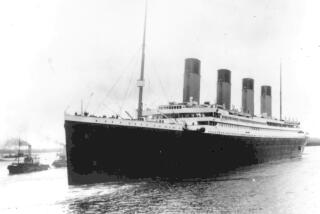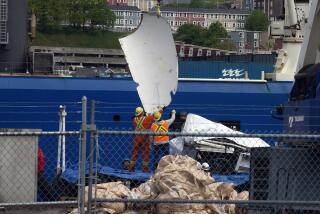Robot Relays Startling Images of Wreck of the Edmund Fitzgerald
- Share via
WHITEFISH POINT, Mich. — Flush with success, researchers returned Thursday to the wreck of the Edmund Fitzgerald hoping for more startlingly clear views of the famed vessel 556 feet beneath the surface of Lake Superior.
“The tension is off,” said Carol Swinehart of Michigan Sea Grant, one of the sponsors of an expedition to explore shipwrecks with a small, deep-water robot that takes three-dimensional video pictures.
The robot on Wednesday obtained the first footage of the Fitzgerald, the 730-foot American ore carrier that sank in a gale in November, 1975, in Canadian waters 17 miles off the coast of northern Michigan. All 29 crew members died, and their bodies were never recovered.
The tragedy became legend within a year when Canadian balladeer Gordon Lightfoot sang “all that remains is the faces and the names of the wives and the sons and the daughters,” in a song about the shipwreck.
Observers on the research ship Grayling were stunned by the clarity of the images that the robot relayed Wednesday.
“This is amazing, totally amazing,” said archeologist Phil Wright of the Canadian Marine Heritage Conservation Program. He watched a video monitor as the robot glided around the bow of the wreck, peering close into broken windows, then backing up to see the battered white ship sitting upright in the mud.
The Fitzgerald showed little age. There was minimal rust and even less sediment. The handset of a radio-telephone dangled from a pilothouse window, one of the few signs that there had ever been life aboard the vessel.
More to Read
Sign up for Essential California
The most important California stories and recommendations in your inbox every morning.
You may occasionally receive promotional content from the Los Angeles Times.













